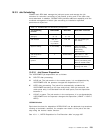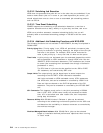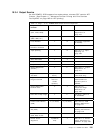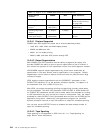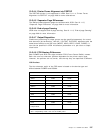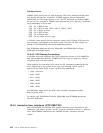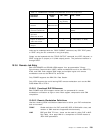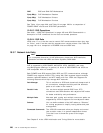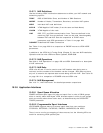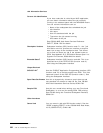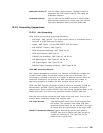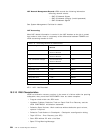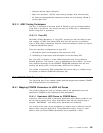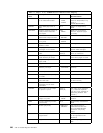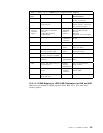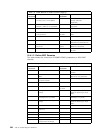10.3.7.1 NJE Definitions
Use the following JES2 initialization statements to define your NJE network and
networking options:
TPDEF BSC & SNA Buffer Sizes, and Number of SNA Sessions
NJEDEF Number of Nodes, Transmitters, Receivers, and other NJE options
NODE Individual NJE node definitions
APPLID VTAM Applid of NJE nodes (if not the same as Node Name)
LOGON VTAM Applids of this node
LINE BSC, CTC, and SNA communication lines. These are defined in the
same way RJE lines are defined. Lines can be used interchangeably
between RJE and NJE. See the comparison of PLINE macro
parameters and JES2 parameters in Table 18 on page 228.
CONNECT Predefined NJE Node Connections
See Table 21 on page 230 for a comparison of PNODE macros to JES2 NODE
parameters.
In addition to the JES2 Init & Tuning Guide (Chapter 5), also see
NJE Installation,
Operation and Use with JES2 and Other Systems
, GG22-9339.
10.3.7.2 NJE Operations
See 28.6.2, “NJE Operations” on page 453 and
JES2 Commands
for a description
of NJE commands.
10.3.7.3 NJE Exits
JES2 exits 46 and 47 can be used to scan NJE headers when being sent or
received, and the contents of the headers can be changed. JES2 does not have
any exit to examine the spooled data records being sent with NJE. See Table 23
on page 231 for a comparison of POWER exits and JES2 exits.
10.3.7.4 NJE Management
See 10.3.7.1, “NJE Definitions” for detailed parameter comparisons.
10.3.8 Application Interfaces
10.3.8.1 Spool Space Allocation
POWER allocates spool space for jobs and spool files in units of DBLK groups
which is usually about 4000 bytes. JES2 allocates space in units of track groups
which are usually about three tracks each, as determined by the SPOOLDEF
TGSIZE parameter.
10.3.8.2 Programmable Spool Interfaces
VSE/POWER supports macros to access spool data from user partitions:
CTLSPOOL, GETSPOOL, PUTSPOOL, PWRSPL, MAPXPCCB, and XPCC.
There is not a one-for-one mapping of these macros, but the following APIs are
useful for accessing JES2 spooled jobs.
Chapter 10. POWER and JES2 221



